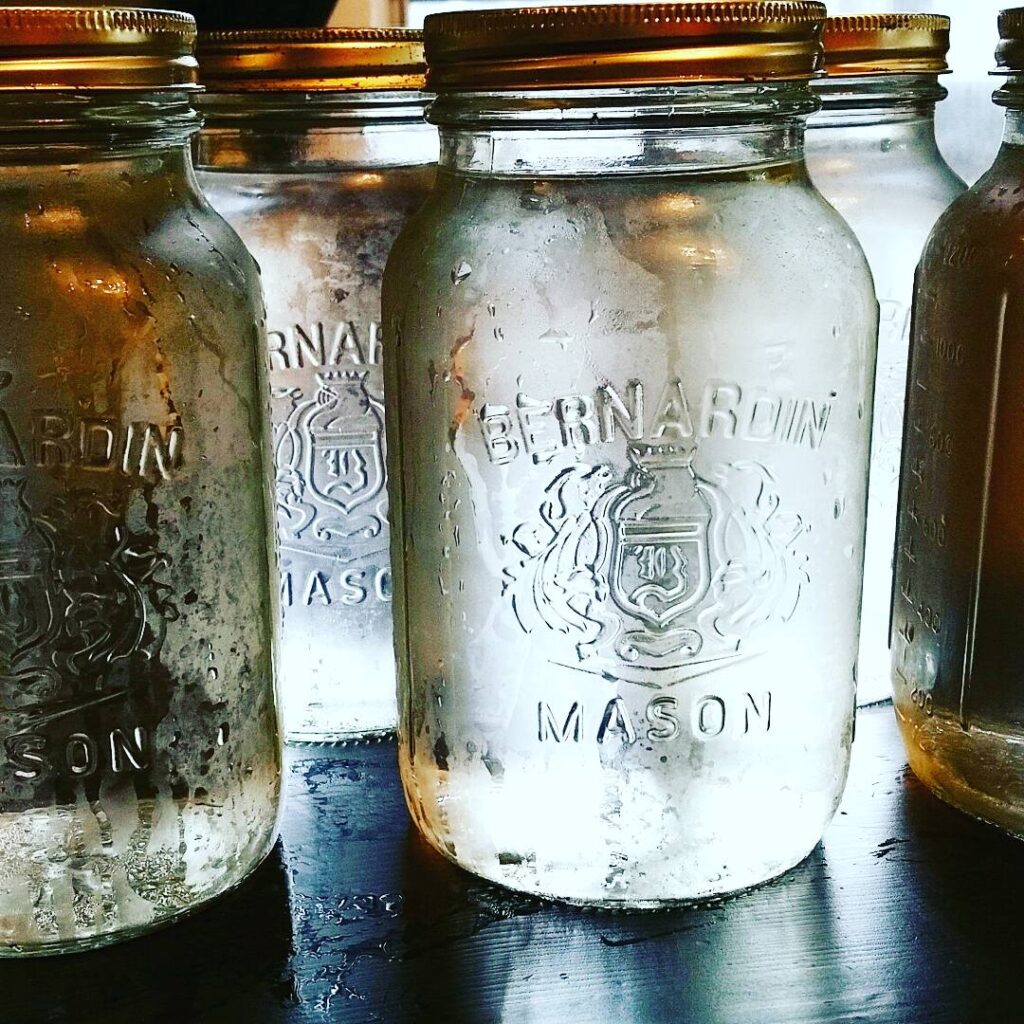Make Your Own Maple Syrup
This is part one of two of the urban tree tapping series. In this post I’ll cover finding your tree, tapping it, and collecting the sap. In part two we’ll talk about the boil, where we turn that liquid sap into liquid gold.
The process of making maple syrup is a powerful way to connect with nature. As gardeners and homesteaders, we spend spring, summer, and at least part of fall in a dance with nature, closely attuned to the weather patterns (Will there be frost tonight? How long has it been since it rained?). Winter is our time for rest, but with that can come a disconnect from nature. Some research backs the idea that winter can feel glum and blue because we’re less connected with nature in winter. If you have nothing else getting you outside to observe and tend to living things in the winter, we think that maple tapping is a great way to scratch that itch.
Connection to seasonal food is also trickier in the winter, but if you make your own maple syrup, you can make a seasonal tradition of cooking pancakes on a griddle over an open fire and topping with freshly finished maple syrup; or, make maple candy by pouring fresh syrup over snow. These food experiences make lasting memories.
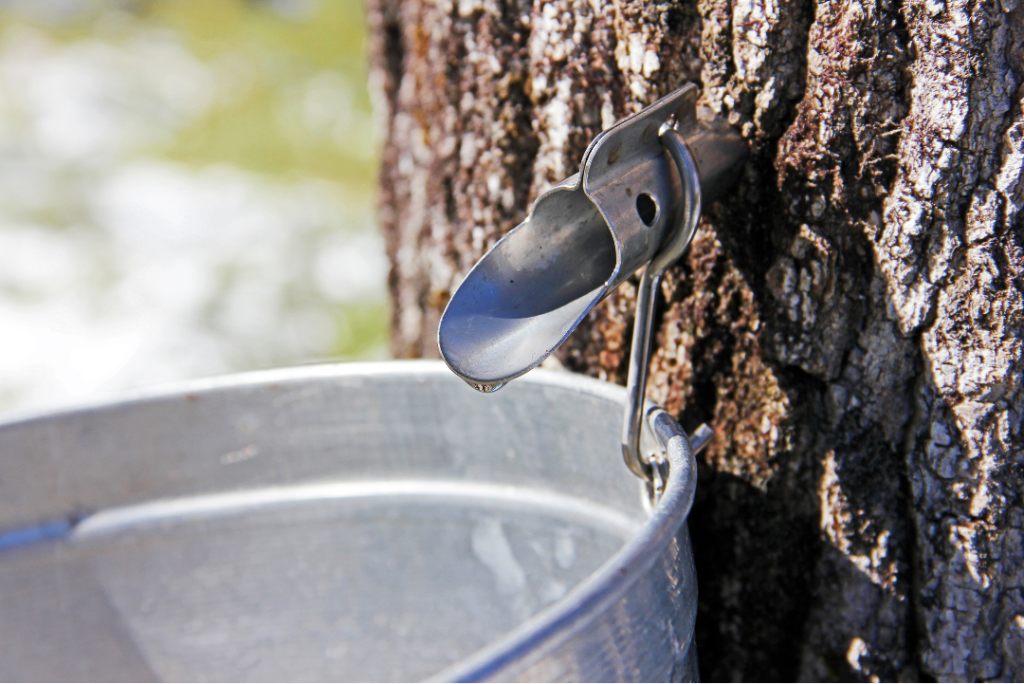
From Sap to Syrup
Maple syrup is made by boiling down maple tree sap until most of the water has evaporated and you’re left with a high sugar content syrup. Maple syrup that is produced and sold commercially is most often made from the sap of sugar maple trees (black maple and red maple are also sometimes used). These trees have some of the highest sugar content in their sap. Sugar maples are hard to find in cities because they’re not well suited to life on a roadside with exposure to road salt and pollution. If you’re lucky enough to have unfettered access to a sugar, black, or red maple, you can tap it, collect its sap, and make your own maple syrup. If you have another kind of maple tree, you can tap it, too!
If you’re looking for a resource to help identify a maple tree on your property, this is a good one.
Is Your Tree Good To Tap?
Once you’ve found a maple tree you have permission to tap, be sure it’s mature enough to handle being tapped. Some Indigenous stewards of the Maple teach that a tree should be at least the circumference of one hug to tap. Others in the sugaring industry suggest a measurement at least 30cm (or about a foot) in diameter. For trees around this size, you can tap them with one tap. Larger trees may be able to accommodate multiple taps, but our priority should be on preserving the health of the maple trees over maximizing sap collection. Take into account environmental conditions, tree health, and tree size before tapping with more than one tap.
There are lots of other types of maple tree that can be tapped for maple syrup, not to mention all the other species of tree that can be tapped to make other syrups, like birch or walnut. We have tapped Norway Maple and Manitoba Maple in the city (both invasive species where we live), and we tap sugar maples on family property in the country.
Some people will tell you not to bother tapping a non-sugar maple because the sugar content is too low. The sugar content will dictate the ratio of sap to resulting syrup. The sugar content may be a bit lower, but it’s still a completely reasonable ratio to be worth boiling off all that water to reduce to the sugars. We’ve seen it estimated that you’ll need approximately 60 litres of Norway Maple sap to make 1 litre of syrup. In comparison, the Sugar Maple sap has an estimated 40:1 sap to syrup ratio.
We’ve also heard the argument that syrup from other species of maple tree doesn’t taste the same as true sugar maple syrup. That logic is weak, in our opinion, because syrup rarely tastes the same coming from any two trees, even two sugar maples, and even the same tree at two different times in the season. Tasting different flavoured syrups is one of the benefits of tapping different maple species!
Equipment
Once you’ve identified your tree, it’s time to get your equipment. You’ll need a spial (or multiple spials, depending on the size of your tree), tubing to connect to your spial, at least one food grade plastic pail with a lid, a hammer, and a drill with bits the size of the spial and the tubing. You can get this equipment at farm supply stores, some hardware stores, and even on Amazon. I recommend the plastic spial, tubing, and pail with lid for urban tapping (as opposed the classic metal spial and pail) because you want to minimize the risk of passersby throwing garbage in your pail of pristine sap. If you opt for an old fashioned metal pail for aesthetics, definitely get it a lid. You’ll get a lot of debris, rain, and occasionally, drown rodents in open pails of sap.
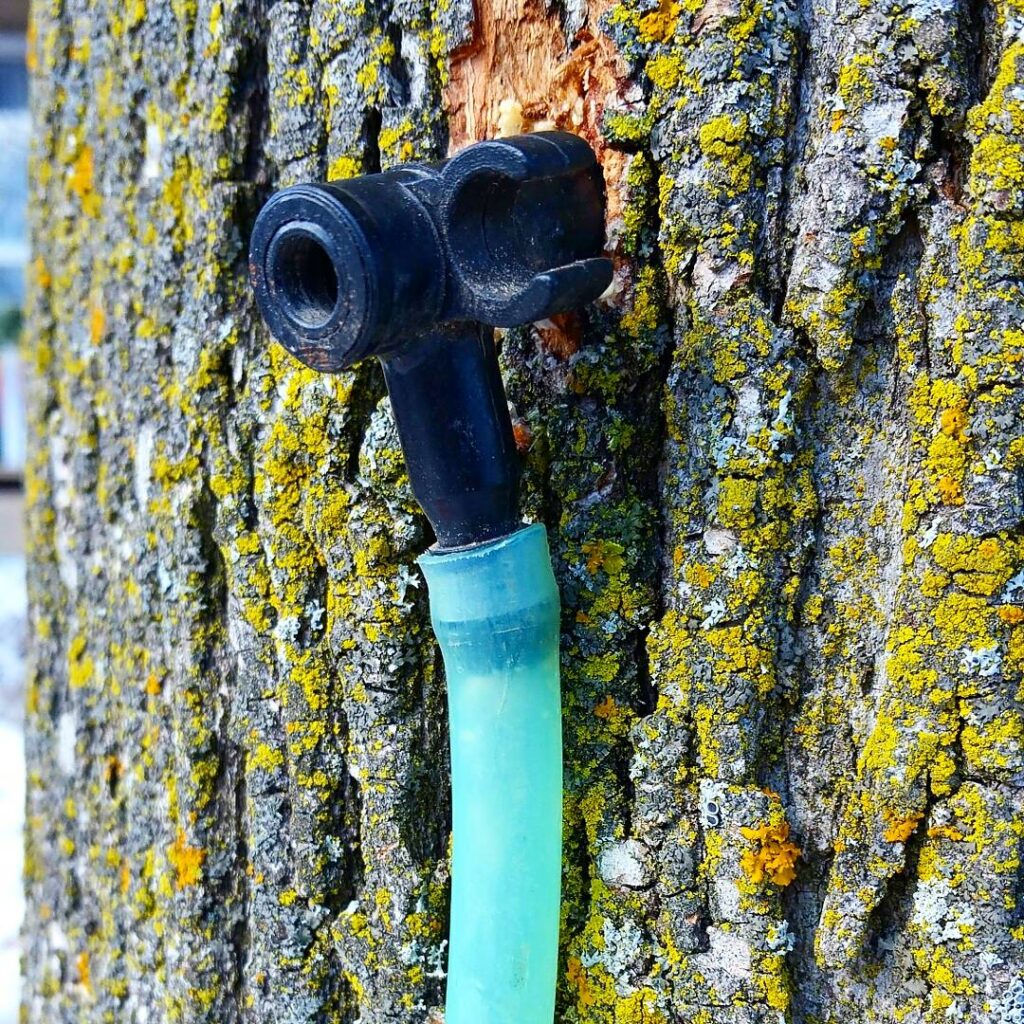
When To Tap
Tapping the tree should take place when daytime temperatures start to rise above freezing, but nighttime temps are still below freezing. For us, it’s usually mid-February to mid-March. To tap your tree, drill a hole in your tree the size of the spial at a slight upward angle (think about allowing the sap to drip out with the help of gravity). Drill 2″ to 2.5″ into the tree. You’ll also want to drill a hole the size of your tubing into the lid of the pail. Then lightly hammer your spial in, attach the tubing, and pop the other end of the tubing through the hole in the pail lid. If you live in a windy environment or you’re tapping a roadside tree with a lot of foot traffic, consider chaining/tying it to the tree.
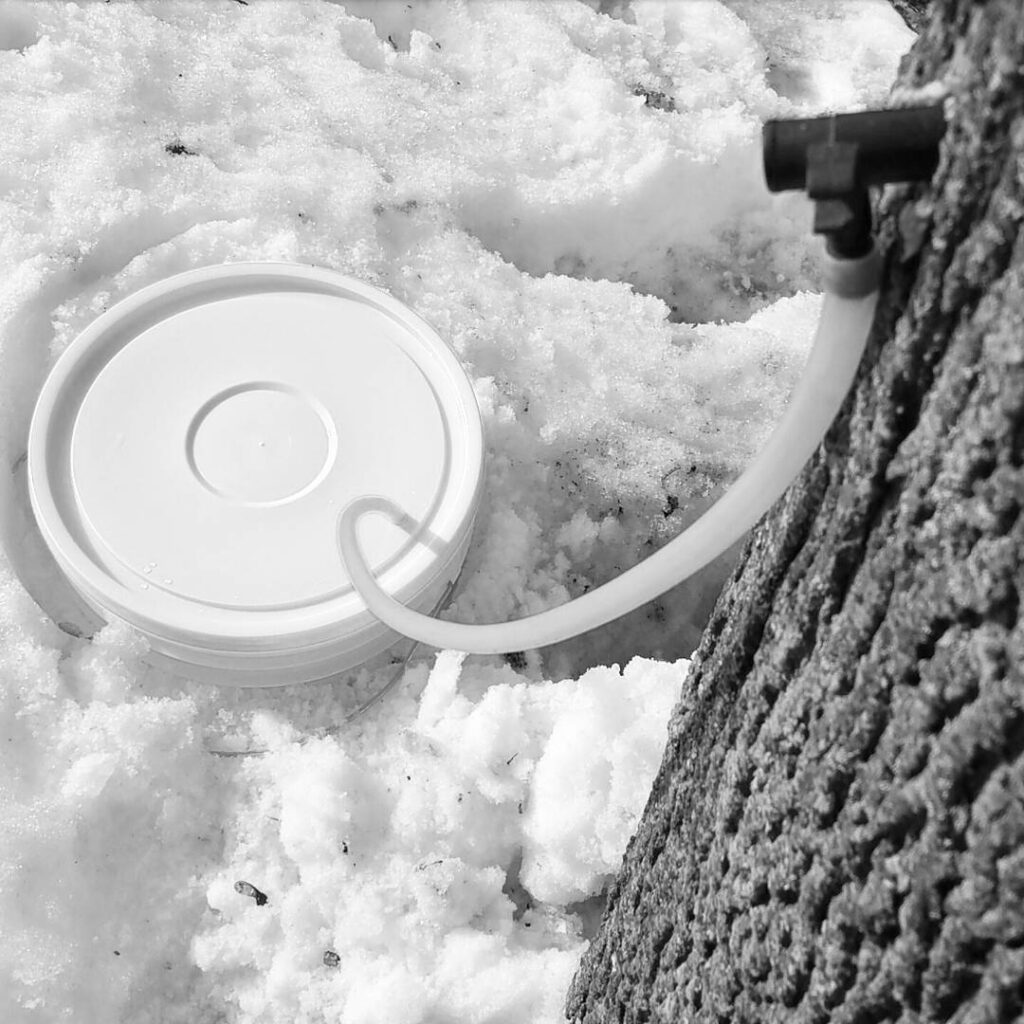
A word to the wise: sap can spoil if it gets warm. Empty your sap pail every day or two into jars and keep in your fridge or freezer. If you have extra buckets and a deep freezer, this is the easiest way to store collected sap until you’re ready for a boil. In Part Two of this series, we’ll boil down the sap into syrup. If you’re playing along at home, now’s the time to start sourcing a turkey frier or other means of having an outdoor boiling station.
